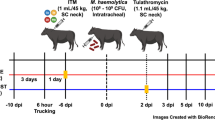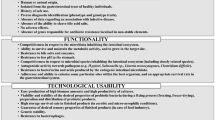Abstract
Nutraceutical plants provide nutrients for the animal as well as secondary compounds that can affect the biology and survival of gastrointestinal nematodes (GIN). Current screening of nutraceutical plants is based on in vitro evidence of anthelmintic (AH) activity against different life stages of GIN, but nutritional information is omitted or scarce. This study proposes an integral in vitro screening protocol to identify the nutraceutical value of the foliage from plant species consumed by small ruminants, using Haemonchus contortus as a biological model. The leaves from Acacia collinsii, A. pennatula, Bunchosia swartziana, Gymnopodium floribundum, Havardia albicans, Leucaena leucocephala, Lysiloma latisiliquum, Mimosa bahamensis, Piscidia piscipula, and Senegalia gaumeri were evaluated for their chemical composition and in vitro digestibility. Acetone:water extracts (70:30) from leaves of each plant were evaluated using the egg hatch assay and larval exsheathment inhibition assay. Respective effective concentrations 50% (EC50) were determined for each assay. The ten plant species showed good nutritional value for ruminants, including crude protein (> 10%), metabolizable energy (> 2.9 MJ/kg DM), and varied CT content (from 1.0 to 37.6%). The best AH activity against H. contortus eggs (EC50 = 401.8 μg/mL) and L3 (EC50 = 83.1 μg/mL) was observed for S. gaumeri extract. Although all the plant species showed in vitro nutraceutical potential, the leaves of S. gaumeri had the best values. The proposed in vitro protocol showed to be useful for the integral assessment of the nutraceutical potential of different plant species as it included the nutritional value and the AH activity against eggs and L3 in the selected plant species.



Similar content being viewed by others
References
AFRC (1993) Agricultural Food and Research Council. Energy and protein requirements of ruminants. CAB International, Wallingford
AOAC (1980) Official Methods of Analysis, 13th edn. Association of Official Analytical Chemists, Washington
Athanasiadou S, Kyriazakis I, Jackson F, Coop RL (2000a) Effects of short-term exposure to condensed tannins on adult Trichostrongylus colubriformis. Vet Rec 146:728–732
Athanasiadou S, Kyriazakis I, Jackson F, Coop RL (2000b) Consequences of long-term feeding with condensed tannins on sheep parasitised with Trichostrongylus colubriformis. Int J Parasitol 30:1025–1033
Barros-Rodríguez M, Solorio-Sánchez J, Ku-Vera J, Ayala-Burgos A, Sandoval-Castro C, Solís-Pérez G (2012) Productive performance and urinary excretion of mimosine metabolites by hair sheep grazing in a silvopastoral system with high densities of Leucaena leucocephala. Trop Anim Health Prod 44:1873–1878
Bauer BU, Pomroy WE, Gueydon J, Gannac S, Scott I, Pfister K (2010) Comparison of the FLOTAC technique with the McMaster method and the Baermann technique to determine counts of Dictyocaulus eckerti L1 and strongylid eggs in faeces of red deer (Cervus elaphus). Parasitol Res 107:555–560
Castañeda-Ramírez GS, Mathieu C, Vilarem G, Hoste H, Mendoza-de-Gives P, González-Pech PG, Torres-Acosta JFJ, Sandoval-Castro CA (2017a) Age of Haemonchus contortus third stage infective larvae is a factor influencing the in vitro assessment of anthelmintic properties of tannin containing plant extracts. Vet Parasitol 243:130–134
Castañeda-Ramírez GS, Torres-Acosta JFJ, Sandoval-Castro CA, González-Pech PG, Parra-Tabla VP, Mathieu C (2017b) Is there a negative association between the content of condensed tannins, total phenols, and total tannins of tropical plant extracts and in vitro anthelmintic activity against Haemonchus contortus eggs? Parasitol Res 116:3341–3348
Chan-Pérez JI, Torres-Acosta JFJ, Sandoval-Castro AC, Hoste H, Castañeda-Ramírez GS, Vilarem G, Mathieu C (2016) In vitro susceptibility of ten Haemonchus contortus isolates from different geographical origins towards acetone:water extracts of two tannin rich plants. Vet Parasitol 217:53–60
Chan-Pérez JI, Torres-Acosta JFJ, Sandoval-Castro CA, Castañeda-Ramírez GS, Vilarem G, Mathieu C, Hoste H (2017) Susceptibility of ten Haemonchus contortus isolates from different geographical origins towards acetone:water extracts of polyphenol-rich plants. Part 2: infective L3 larvae. Vet Parasitol 240:11–16
Collas C, Sallé G, Dumont B, Cabaret J, Cortet J, Martin-Rosset W, Wimel L, Fleurance G (2018) Are sainfoin or protein supplements alternatives to control small strongyle infection in horses? Animal 12:359–365
Doner LW, Becard G, Irwin PL (1993) Binding of flavonoids by polyvinylpolypyrrolidone. J Agric Food Chem 41:753–757
Galicia-Aguilar HH, Rodríguez-Gonzales LA, Capetillo-Leal CM, Cámara-Sarmiento R, Aguilar-Caballero AJ, Sandoval-Castro CA, Torres-Acosta JFJ (2012) Effects of Harvardia albicans supplementation on feed consumption and dry matter digestibility of sheep and the biology of Haemonchus contortus. Anim Feed Sci Technol 176:178–184
Gaudin E, Simon M, Quijada J, Schelcher F, Sutra JF, Lespine A, Hoste H (2016) Efficacy of sainfoin (Onobrychis viciifolia) pellets against multi resistant Haemonchus contortus and interaction with oral ivermectin: implications for on-farm control. Vet Parasitol 227:122–129
González-Pech PG, Torres-Acosta JFJ, Sandoval-Castro CA (2014) Adapting a bite coding grid for small ruminants browsing a deciduous tropical forest. Trop Subtrop Agroecosyst 17:63–70
González-Pech PG, Torres-Acosta JFJ, Sandoval-Castro CA, Tun-Garrido J (2015) Feeding behavior of sheep and goats in a deciduous tropical forest during the dry season: the same menu consumed differently. Small Rumin Res 133:128–134
Hernández-Bolio GI, García-Sosa K, Escalante-Erosa F, Castañeda-Ramírez GS, Sauri-Duch E, Torres-Acosta JFJ, Peña-Rodríguez LM (2018a) Effects of polyphenol removal methods on the in vitro exsheathment inhibitory activity of Lysiloma latisiliquum extracts against Haemonchus contortus larvae. Nat Prod Res 32:508–513
Hernández-Bolio GI, Kutzner E, Eisenreich W, Torres-Acosta JFJ, Peña-Rodríguez LM (2018b) The use of 1H-NMR metabolomics to optimize the extraction and preliminary identification of anthelmintic products from the leaves of Lysiloma latisiliquum. Phytochem Anal 29:413–420
Herrera-Manzanilla FA, Ojeda-Robertos NF, González-Garduño R, Cámara-Sarmiento R, Torres-Acosta JFJ (2017) Gastrointestinal nematode populations with multiple anthelmintic resistance in sheep farms from the hot humid tropics of Mexico. Vet Parasitol Reg Stud Rep 9:29–33
Hoste H, Torres-Acosta JFJ, Sandoval-Castro CA, Mueller-Harvey I, Sotiraki S, Louvandini H, Thamsborg SM, Terrill TH (2015) Tannin containing legumes as a model for nutraceuticals against digestive parasites in livestock. Vet Parasitol 212:5–17
Jackson F, Hoste H (2010) In vitro methods for the primary screening of plant products for direct activity against ruminant gastrointestinal nematodes. In: Vercoe PE, Makkar HPS, Schlink AC (eds) In vitro screening of plant resource for extra-nutritional attributes in ruminants: nuclear and related methodologies. Springer Science+Business Media B.V., Dordrecht, pp 25-45
Klongsiriwet C, Quijada J, Williams AR, Mueller-Harvey I, Williamson EM, Hoste H (2015) Synergistic inhibition of Haemonchus contortus exsheathment by flavonoid monomers and condensed tannins. Int J Parasitol Drugs Drug Resist 5:127–134
Laborde B, Moine-Ledoux V, Richard T, Saucier C, Dubourdieu D, Monti JP (2006) PVPP−polyphenol complexes: a molecular approach. J Agric Food Chem 54:4383–4389
Legendre H, Hoste H, Gidenne T (2017) Nutritive value and anthelmintic effect of sainfoin pellets fed to experimentally infected growing rabbits. Animal 11:1464–1471
LeOra Software (2004) Polo plus. Probit and logit analysis. LeOra Software, Berkeley
Mahieu M, Gauthier V, Arquet R, Calif B, Archimède H, Mandonnet N (2015) Feasibility of a “leader-follower” grazing system instead of specialized paddocks with regard to integrated gastrointestinal control in small ruminant farming. Trop Anim Health Prod 47:773–778
Makkar HP (2003) Quantification of tannins in tree and shrub foliage: a laboratory manual. Springer Science & Business Media, Berlin
Makkar HP, Blümmel M, Becker K (1995) Formation of complexes between polyvinyl pyrrolidones or polyethylene glycols and tannins, and their implication in gas production and true digestibility in in vitro techniques. Br J Nutr 73:897–913
Manolaraki F, Sotiraki S, Stefanakis A, Skampardonis V, Volanis M, Hoste H (2010) Anthelmintic activity of some Mediterranean browse plants against parasitic nematodes. Parasitology 137:685–696
Marley CL, Cook R, Keatinge R, Barrett J, Lampkin NH (2003) The effect of birdsfoot trefoil (Lotus corniculatus) and chicory (Cichorium intybus) on parasite intensities and performance of lambs naturally infected with helminth parasites. Vet Parasitol 112:147–155
Martínez-Ortíz-de-Montellano C, Vargas-Magaña JJ, Canul-Ku HL, Miranda-Soberanis R, Capetillo-Leal C, Sandoval-Castro CA, Hoste H, Torres-Acosta JFJ (2010) Effect of a tropical tannin-rich plant Lysiloma latisiliquum on adult populations of Haemonchus contortus in sheep. Vet Parasitol 172:283–290
Méndez-Ortíz FA, Sandoval-Castro CA, Torres-Acosta JFJ (2012) Short term consumption of Havardia albicans tannin rich fodder by sheep: effects on feed intake, diet digestibility and excretion of Haemonchus contortus eggs. Anim Feed Sci Technol 176:185–191
Mertens DR (2002) Gravimetric determination of amylase-treated neutral detergent fibre in feeds with refluxing beakers or crucibles: collaborative study. J AOAC Int 85:1217–1240
Niezen JH, Robertson HA, Waghorn GC, Charleston WAG (1998) Production, faecal egg counts and worm burdens of ewe lambs which grazed six contrasting forages. Vet Parasitol 80:15–27
Ortiz-Ocampo GI, Chan-Pérez JI, Covarrubias-Cárdenas AG, Santos-Ricalde RH, Sandoval-Castro CA, Hoste H, Capetillo-Leal CM, González-Pech PG, Torres-Acosta JFJ (2016) In vitro and in vivo anthelmintic effect of Coffea arabica residues against an Haemonchus contortus isolate with low susceptibility to tannins. Trop Subtrop Agroecosyst 19:41–50
Paolini V, De La Farge F, Prevot F, Dorchies P, Hoste H (2005) Effects of the repeated distribution of sainfoin hay on the resistance and the resilience of goats naturally infected with gastrointestinal nematodes. Vet Parasitol 127:277–283
Price ML, Van Scoyoc S, Buttler LG (1978) A critical evaluation of the vanillin reaction assay for tannin in sorghum grain. J Agric Food Chem 26:1214–1218
Sepúlveda-Vázquez J, Lara-Del-Rio J, Torres-Acosta JFJ, Ventura-Cordero J, González-Pech PG, Sandoval-Castro AC (2017) Efecto antihelmíntico in vitro de Centrosema macrocarpum sobre la eclosión de huevecillos de Haemonchus contortus. Congreso XI Seminario Internacional de Producción de Ovinos en el trópico Universidad Autónoma de Tabasco
Shaik SA, Terrill TH, Miller JE, Kouakou B, Kannan G, Kallu RK, Mosjidis JA (2004) Effects of feeding Sericea lespedeza hay to goats infected with Haemonchus contortus. S Afr J Anim Sci 34:248–250
Statpoint Technologies Inc (2005) Statgraphics centurion XV. Statpoint Technologies Inc., Warranton
Torres-Acosta JFJ, Sandoval-Castro CA, Hoste H, Aguilar-Caballero AJ, Cámara-Sarmiento R, Alonso-Díaz MA (2012) Nutritional manipulation of sheep and goats for the control of gastrointestinal nematodes under hot humid and subhumid tropical conditions. Small Rumin Res 103:28–40
Van Soest PJ, Robertson JB, Lewis BA (1991) Methods for dietary fiber, neutral detergent fiber, and non-starch polysaccharide in relation to animal nutrition. J Dairy Sci 74:3583–3597
Vargas-Magaña JJ, Torres-Acosta JFJ, Aguilar-Caballero AJ, Sandoval-Castro CA, Hoste H, Chan-Perez JI (2014) Anthelmintic activity of acetone-water extracts against Haemonchus contortus eggs: interactions between tannins and other plant secondary compounds. Vet Parasitol 206:322–327
Ventura-Cordero J, González-Pech PG, Jaimez-Rodriguez PR, Ortíz-Ocampo GI, Sandoval-Castro CA, Torres-Acosta JFJ (2017) Gastrointestinal nematode infection does not affect selection of tropical foliage by goats in a cafeteria trial. Trop Anim Health Prod 49:97–104
Ventura-Cordero J, González-Pech PG, Torres-Acosta JFJ, Sandoval-Castro CA, Tun-Garrido J (2018a) Sheep and goat browsing a tropical deciduous forest during the rainy season: why does similar plant species consumption results in different nutrient intake. Anim Prod Sci. https://doi.org/10.1071/AN16512
Ventura-Cordero J, González-Pech PG, Jaimez-Rodríguez PR, Ortiz-Ocampo GI, Sandoval-Castro CA, Torres-Acosta JFJ (2018b) Feed resource selection of Criollo goats artificially infected with Haemonchus contortus: nutritional wisdom and prophylactic self-medication. Animal 12:1269–1276
von Samson-Himmelstjerna G, Coles GC, Jackson F, Bauer C, Borgsteede F, Cirak VY, Demeler J, Donnan A, Dorny P, Epe C, Harder A, Höglund J, Kaminsky R, Kerboeuf D, Küttler U, Papadopoulos E, Posedi J, Small J, Várady M, Vercruysse J, Wirtherle N (2009) Standardization of the egg hatch test for the detection of benzimidazole resistance in parasitic nematodes. Parasitol Res 105:825–834
von Son-de Fernex E, Alonso-Díaz MA, Mendoza-de Gives P, Valles-de la Mora B, González-Cortazar M, Zamilpa A, Epigmenio-Castillo G (2015) Elucidation of Leucaena leucocephala anthelmintic-like phytochemicals and the ultrastructural damage generated to eggs of Cooperia spp. Vet Parasitol 214:89–95
Acknowledgments
Authors thank the review of the English language by FJ Torres-Salazar.
Funding
This work was financed by CONACYT-Mexico (Project-CB-2013-01-221608) and CONACYT PCP project between Mexico and France (no. 229330). The first author (G.S. Castañeda-Ramírez) acknowledges the scholarship from CONACYT for her PhD program at UADY (reference no. 7464535353).
Author information
Authors and Affiliations
Corresponding author
Ethics declarations
Conflict of interest
The authors declare that they have no conflict of interest.
Ethics statement
The authors assert that all procedures contributing to this work complied with the ethical standards of the relevant national and institutional guides on the care and use of laboratory animals (license no. CB-CCBA-D-281 2014-003).
Additional information
Section Editor: Georg von Samson-Himmelstjerna
Rights and permissions
About this article
Cite this article
Castañeda-Ramírez, G.S., Rodríguez-Labastida, M., Ortiz-Ocampo, G.I. et al. An in vitro approach to evaluate the nutraceutical value of plant foliage against Haemonchus contortus. Parasitol Res 117, 3979–3991 (2018). https://doi.org/10.1007/s00436-018-6107-0
Received:
Accepted:
Published:
Issue Date:
DOI: https://doi.org/10.1007/s00436-018-6107-0




